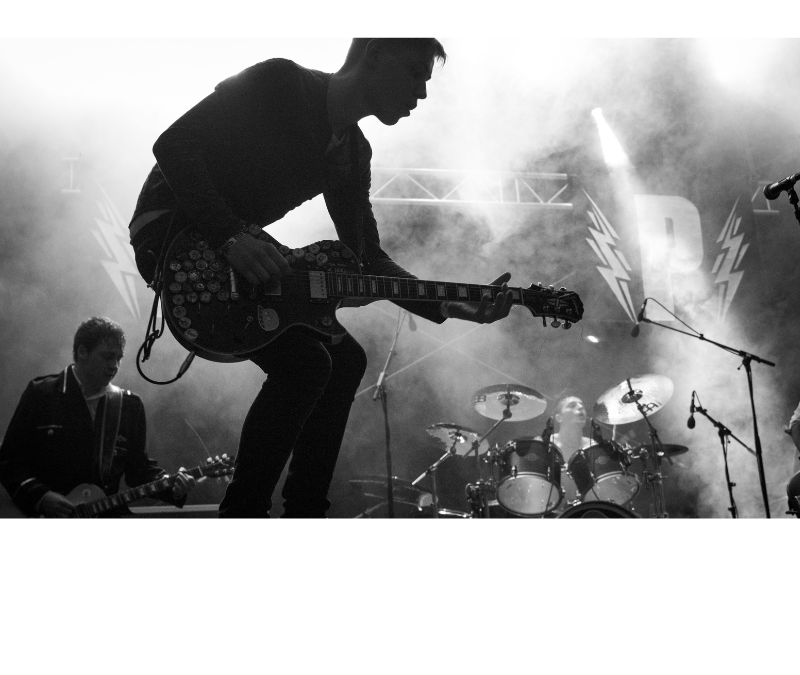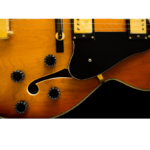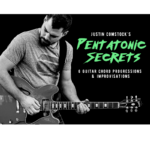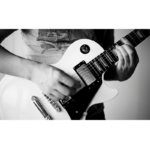When you think of rock music, what comes to mind? For many, it’s the sound of driving, distorted guitar riffs that fill stadiums and fuel rebellious anthems. At the heart of these riffs are guitar power chords, a simple yet powerful tool every rock guitarist must master. In this comprehensive guide, we’ll explore what power chords are, how rock guitarists use them, and examine modern-day rock songs that exemplify their use. We’ll also provide you with tips and examples to help you incorporate power chords into your playing.
What Are Guitar Power Chords?
Power chords are two-note chords typically played on electric guitar, consisting of the root note and the fifth. Sometimes, an octave of the root note is added for extra punch. Unlike traditional chords, power chords omit the third, which gives them their ambiguous, non-major/non-minor sound, making them incredibly versatile in rock music.
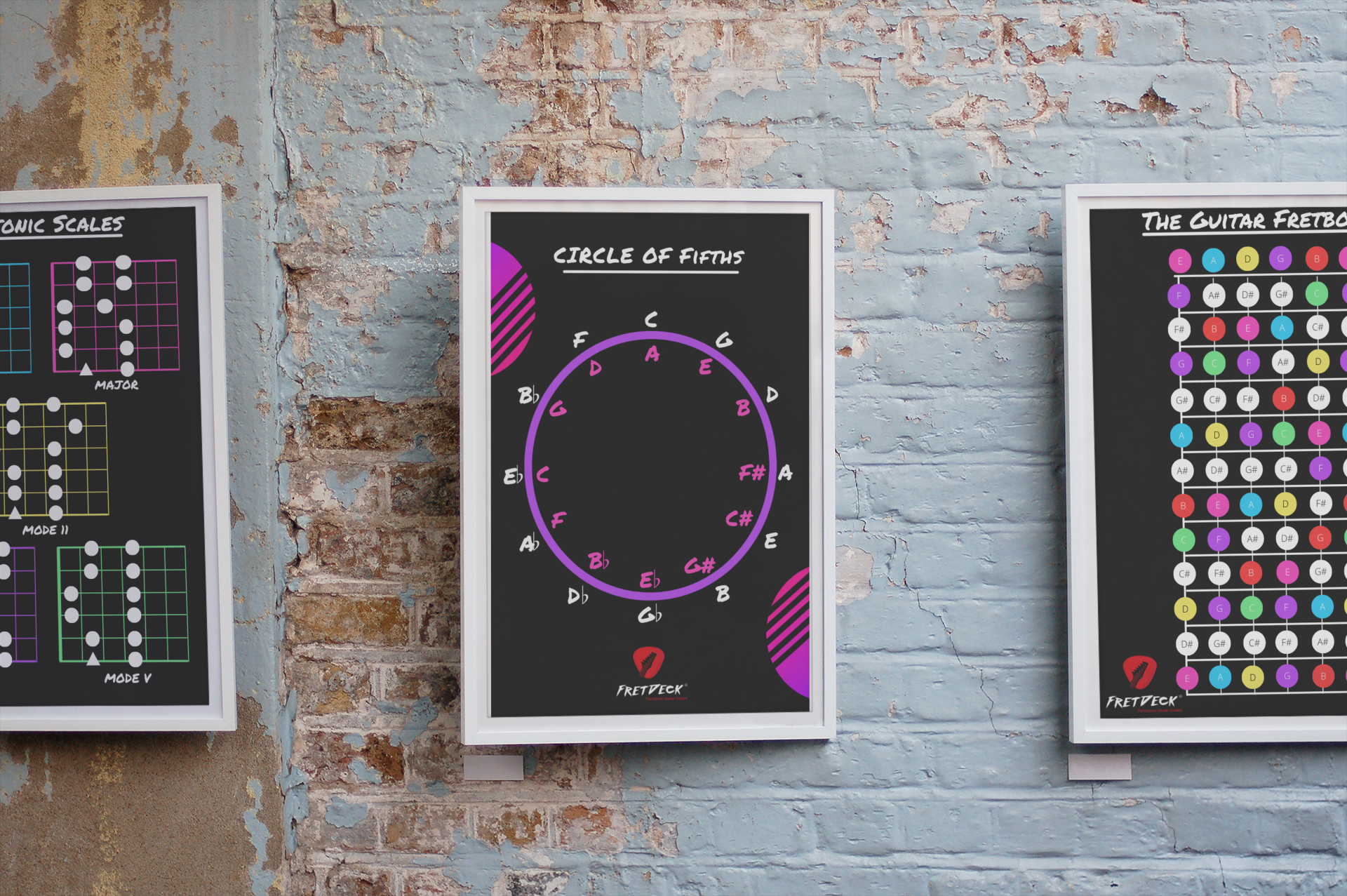
Download FREE Guitar Charts!
We have 27 FREE guitar charts to help you learn the guitar fretboard. Learn How to play chords and scales with these free resources.
Free Guitar Resources
Structure of Power Chords
The most basic power chord shape is as follows:
- Root note on the sixth string (E string), fifth fret (A note).
- Fifth note on the fifth string (A string), seventh fret (E note).
- Optional octave of the root note on the fourth string (D string), seventh fret (A note).
This can be written in tablature as:
luaCopy codee|------
B|------
G|------
D|--7---
A|--7---
E|--5---
The Role of Power Chords in Rock Music
Power chords have been a staple in rock music since the 1950s. Their simplicity and heavy sound make them ideal for creating memorable riffs and driving rhythm parts. Let’s look at how power chords are used in different aspects of rock guitar playing.
Rhythm Guitar
For rhythm guitarists, power chords provide a way to create a solid foundation for a song. They are easy to play and can be moved up and down the neck to follow the song’s chord progression. This makes them perfect for playing fast-paced rock songs and creating a full, thick sound.
Lead Guitar
While power chords are primarily used for rhythm playing, they can also be used in lead guitar parts. Guitarists often use power chords to add emphasis to certain notes or phrases, creating a powerful, punchy effect.
Riffs and Hooks
Many iconic rock riffs and hooks are built around power chords. These riffs are often simple but incredibly effective, capturing the energy and attitude of rock music.
Examples of Modern Rock Songs Using Power Chords
To understand how integral power chords are to modern rock music, let’s look at some examples from contemporary rock songs.
“American Idiot” by Green Day
Green Day’s “American Idiot” is a perfect example of how power chords can drive a song. The main riff is built entirely around power chords, creating a fast, aggressive sound that perfectly matches the song’s rebellious lyrics.
luaCopy codee|------------------
B|------------------
G|------------------
D|-2---2-4-2--------
A|-2---2-4-2-4-2-4--
E|-0---0-2-0-4-2-4--
“Seven Nation Army” by The White Stripes
“Seven Nation Army” by The White Stripes features one of the most recognizable riffs in modern rock, and it’s all based on power chords. The simplicity of the riff, combined with its powerful sound, makes it a perfect example of how effective power chords can be.
luaCopy codee|-----------------
B|-----------------
G|-----------------
D|-----------------
A|--7-7-10-7-5-3-2-
E|-----------------
“Smells Like Teen Spirit” by Nirvana
Nirvana’s “Smells Like Teen Spirit” is another iconic song built around power chords. The driving, distorted power chords create a grunge sound that defined an era of rock music.
luaCopy codee|------------------------
B|------------------------
G|------------------3-3-0-
D|-3-3-x-x-6-6-3-3--3-3-0-
A|-3-3-x-x-6-6-3-3--1-1-2-
E|-1-1-x-x-4-4-1-1--------
Techniques for Playing Power Chords
To get the most out of power chords, it’s essential to master some key techniques. Here are a few tips to help you improve your power chord playing.
Palm Muting
Palm muting involves lightly resting the palm of your picking hand on the strings near the bridge while playing. This technique creates a muted, percussive sound that adds rhythmic interest and can make your power chords sound tighter and more controlled.
Sliding
Sliding between power chords can create smooth transitions and add a dynamic element to your playing. To slide, play the first power chord and then, without lifting your fingers, slide to the next fret.
Bending
Bending the notes in a power chord can add a bluesy or expressive feel. While holding a power chord shape, slightly bend the strings up or down to create a pitch change.
Incorporating Power Chords into Your Playing
Now that you understand what power chords are and how they’re used, let’s look at some practical ways to incorporate them into your playing.
Creating Riffs
One of the best ways to practice power chords is by creating your own riffs. Start with a simple power chord shape and experiment with different rhythms and progressions. Try adding palm muting, sliding, and bending to see how they change the sound of your riff.
Learning Songs
Learning songs that use power chords is an excellent way to improve your technique and understand how they’re used in different musical contexts. Start with some of the examples we’ve provided and then branch out to other rock songs that feature power chords.
Writing Your Own Songs
Once you’re comfortable with power chords, try writing your own songs. Use power chords to create the foundation of your song and then build on it with additional chords, melodies, and lyrics.
The Evolution of Power Chords in Modern Rock
While power chords have been a staple of rock music for decades, modern rock bands continue to find new and innovative ways to use them. Let’s explore how contemporary rock guitarists are pushing the boundaries of power chords.
Drop Tuning
Many modern rock and metal bands use drop tuning to create a heavier, more aggressive sound. In drop tuning, the lowest string is tuned down a whole step, making it easier to play power chords with a single finger. This technique allows for faster, more intricate riffing.
Extended Power Chords
Some guitarists experiment with extended power chords by adding additional notes to the basic shape. For example, adding a second or ninth to a power chord can create a more complex, textured sound.
Combining Power Chords with Other Techniques
Modern rock guitarists often combine power chords with other techniques like tapping, harmonics, and effects to create unique sounds. By integrating power chords into more complex playing styles, they can maintain the power and simplicity of the chords while adding new layers of interest.
Conclusion
Guitar power chords are a fundamental tool for any rock guitarist. Their simplicity and versatility make them perfect for creating driving rhythms, powerful riffs, and memorable hooks. By mastering power chords and incorporating them into your playing, you can tap into the raw energy of rock music and create your own powerful sound.
Whether you’re just starting out or looking to take your playing to the next level, practicing power chords is essential. Use the tips and examples provided in this guide to improve your technique, learn new songs, and start writing your own rock anthems. With dedication and practice, you’ll soon be using guitar power chords to rock out with the best of them.

Download FREE Guitar Charts!
We have 27 FREE guitar charts to help you learn the guitar fretboard. Learn How to play chords and scales with these free resources.
Free Guitar Resources

